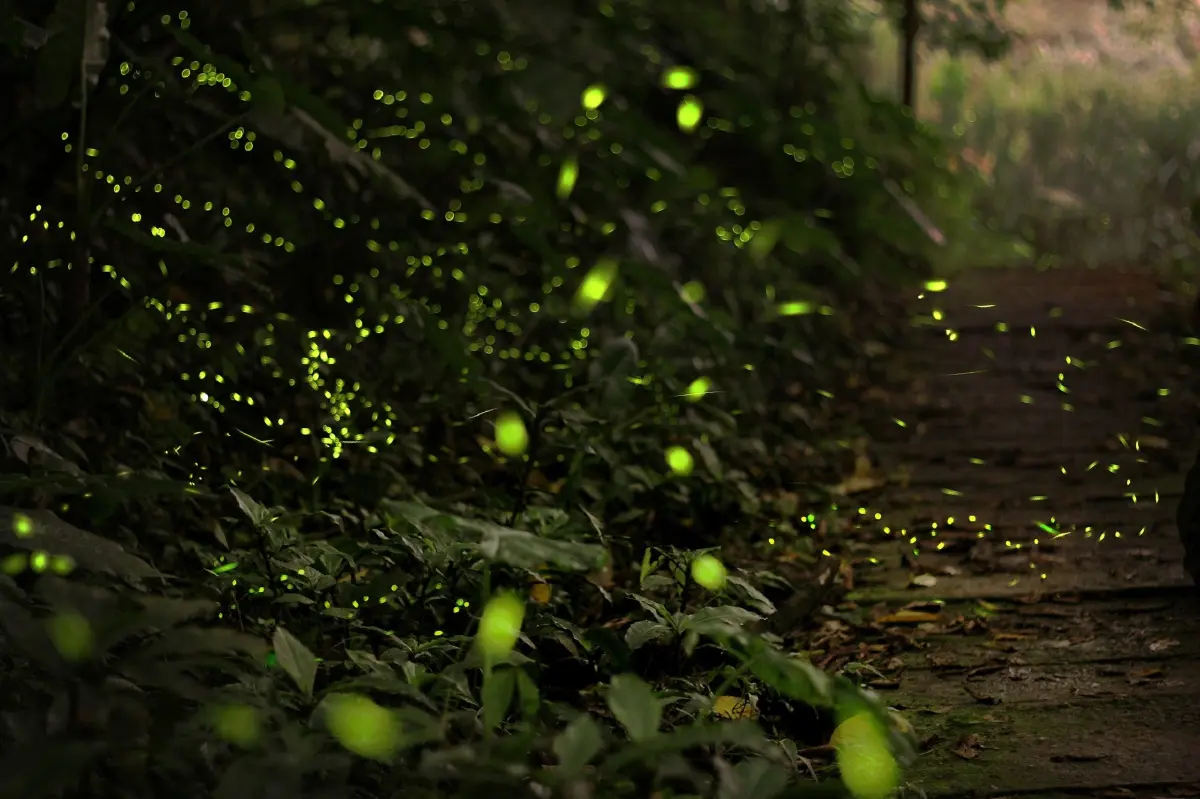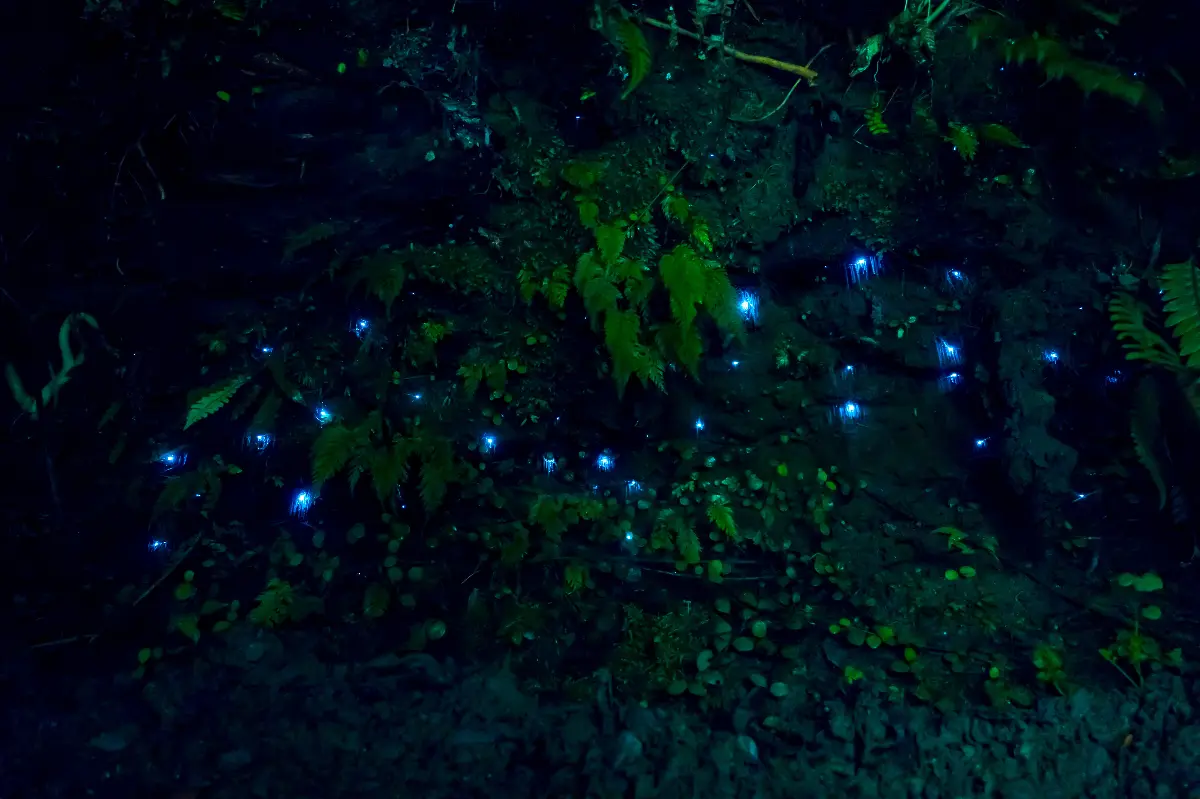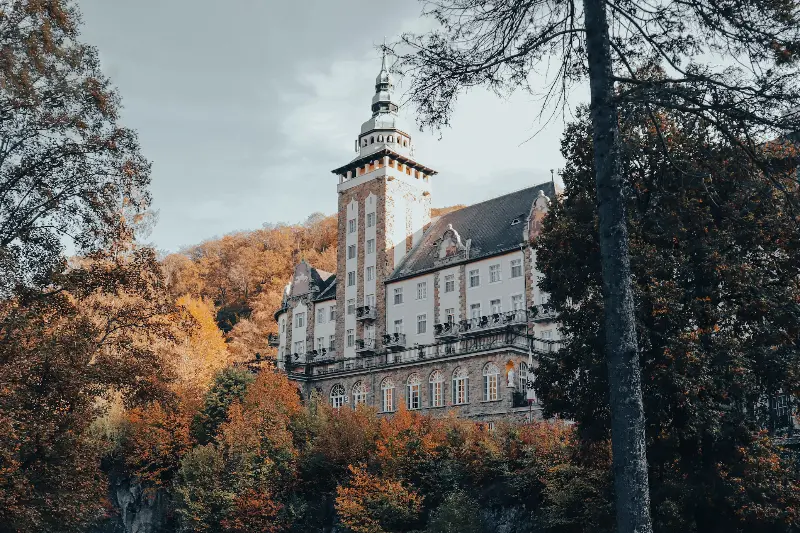
Helyszín címkék:
You have to see this! Like a million candles in the forest!
Szabó Sára
It happened one late spring day that I miscalculated, and the afternoon’s ride was well into the twilight. My incipient despair at not being prepared with adequate lighting was ended by a miraculous phenomenon. As I was pedalling at full speed along the winding, wild forest road between Pécs and Orfű, something caught my attention. The leaves seemed to vibrate, a thousand tiny points of light floating in the trees. I put the bike aside and sat down to admire the phenomenon. I just sat there, at the base of a tree, and could hardly believe my eyes. Since then, I have not seen such an intense firefly swarming, even though I witness the insects’ mating dance every year. But the spectacle is magical every year, so I can only encourage everyone to get up and try their luck.

How can these tiny little creatures light up?
One of the most remarkable wonders of the magical world of nature is bioluminescence, whereby individual organisms emit light (photons).
Lighting can have several purposes, such as scaring off predators, attracting food or, as in the case of fireflies, finding mates. The species found in our country light up the front of their pots, using a chemical called luciferin. As this organic compound oxidises, the insects become able to release their characteristic yellowish or greenish colour. Their aim is to attract each other’s attention with their flashing lights; while the males flit to and fro, the wingless females lurk in the undergrowth to signal their whereabouts. It is not only the adults that “morse-code”. The larvae and their pupae can also light up. Their light can be seen from as early as April and is a message to predators: “leave me alone, I’m poisonous!”.
When and where should we look for them?

Unfortunately, the start of the swarming process is influenced by many factors. Fireflies primarily need warmth to mate – being cold-blooded animals – and a minimum of 18-20 degrees at dusk. This is often as late as June, but if the end of spring is milder, it is worth exploring earlier. They are also sensitive to air movement and humidity, like most insects. If conditions are right, look for them in wet, damp woodland or in marshy, boggy areas, as these are where they feel most at home. Once the swarming has started, at dusk, around 8-9 p.m., look out for the flitting “lanterns”. It is almost certain that by 10 o’clock, they will have “turned off their lights”, so we only have an hour to spot the phenomenon. If you are unsuccessful, don’t give up easily, as the firefly clouds are migratory, so if you only see a few examples one night, you may find a more intense mating dance the next. Mating usually takes 2-3 weeks, usually until the end of June.
Firefly watching walks are organised in several places
In our country, we can watch the mating dance of insects in several places in the framework of organised “hunts”. At these events, you can not only learn about the special phenomenon, but also get an insight into the natural and cultural values of the region. Family walks have been organised in the Alcsút Arboretum for 15 years now, but there will also be tours in Pécs, thanks to the Baranya County Association of Naturefriends, in Pannonhalma at the Soroksár Botanical Garden, at the Eplény Chairlift and in the Zirc Arboretum. For guided tours in the evening, check out the Mécsbogár Fesztivál (Firefly Festival) Facebook page or bogarmester.hu. Of course, it is also worth trying your luck on your own sometimes, just in case!





